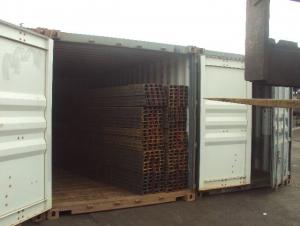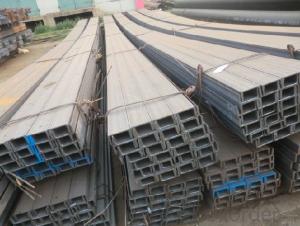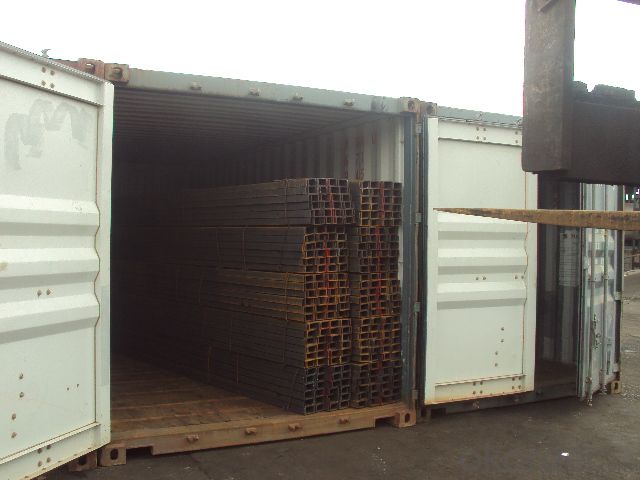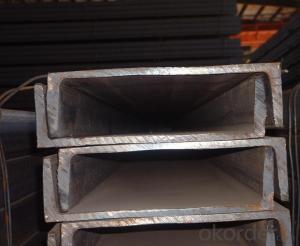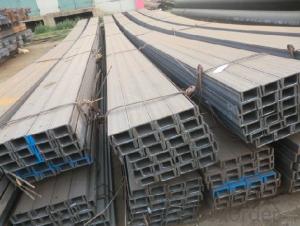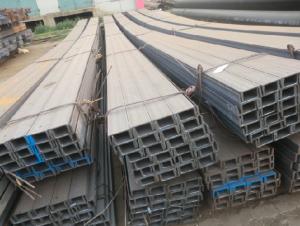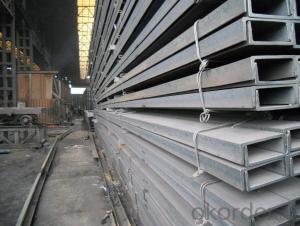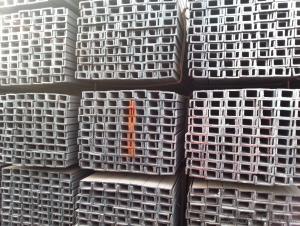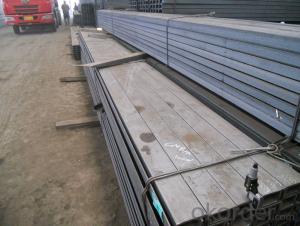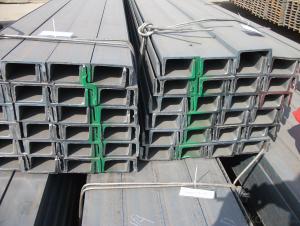U-channel JIS Standard with Different Sizes
- Loading Port:
- Tianjin
- Payment Terms:
- TT or LC
- Min Order Qty:
- 25 m.t.
- Supply Capability:
- 1000 m.t./month
OKorder Service Pledge
OKorder Financial Service
You Might Also Like
Product Description:
OKorder is offering U-channel at great prices with worldwide shipping. Our supplier is a world-class manufacturer of steel, with our products utilized the world over. OKorder annually supplies products to European, North American and Asian markets. We provide quotations within 24 hours of receiving an inquiry and guarantee competitive prices.
Product Applications:
1.The JIS channel can be devided into two kinds, namely common channel steel and light channel steel. The sizes of hot rolled common channel steel range from 5# to 40#. Meanwhile, the channel steel can be divided into cold forming sectional equal channel steel, cold forming sectional unequal channel steel, cold forming inner edge channel steel and outer edge channel steel.
2.The JIS channel is usually used for arch-itechtural structure, and they could be welded in order to support or hang a vari-ety of facilities. They are also usually used in combination with I beam. The channel steel with sizes under 14# is usually applied to construction engineering, as purline, while the channel steel with sizes above 16# is more likely to be used in building vehicle chassis structure and mechanical structure. Furthermore, the channel steel in sizes above 30# are target at building bridge structure, as tension bar.
Product Advantages:
OKorder's U-channel are durable, strong, and resist corrosion.
Main Product Features:
· Premium quality
· Prompt delivery & seaworthy packing (30 days after receiving deposit)
· Corrosion resistance
· Can be recycled and reused
· Mill test certification
· Professional Service
· Competitive pricing
Product Specifications:
1. We are definitely speciallizing in manufacturing and supplying channel steel as per japanese standard, which is characterised with high mechanical strength and competitive prices.
2. The sections in details are as followings in the table-1
JIS CHANNEL | Standard h | Sectional b | Dimension s | t | Mass: Kg/m |
(mm) | (mm) | (mm) | (mm) | ||
50x25 | 50 | 25 | 3.0 | 6.00 | 2.37 |
75X40 | 75 | 40 | 3.8 | 7.00 | 5.30 |
75X40 | 75 | 40 | 4.0 | 7.00 | 5.60 |
75X40 | 75 | 40 | 4.5 | 7.00 | 5.85 |
75X40 | 75 | 40 | 5.0 | 7.00 | 6.92 |
100X50 | 100 | 50 | 3.8 | 6.00 | 7.30 |
100X50 | 100 | 50 | 4.2 | 6.00 | 8.03 |
100X50 | 100 | 50 | 4.5 | 7.50 | 8.97 |
100X50 | 100 | 50 | 5.0 | 7.50 | 9.36 |
125X65 | 125 | 65 | 5.2 | 6.80 | 11.66 |
125X65 | 125 | 65 | 5.3 | 6.80 | 12.17 |
125X65 | 125 | 65 | 5.5 | 8.00 | 12.91 |
125X65 | 125 | 65 | 6.0 | 8.00 | 13.40 |
150x75 | 150 | 75 | 5.5 | 7.30 | 14.66 |
150x75 | 150 | 75 | 5.7 | 10.00 | 16.71 |
150x75 | 150 | 75 | 6.0 | 10.00 | 17.90 |
150x75 | 150 | 75 | 6.5 | 10.00 | 18.60 |
150x75 | 150 | 75 | 6.5 | 10.00 | 24.00 |
200X80 | 200 | 80 | 7.5 | 11.00 | 24.60 |
Packaging & Delivery of U-channel:
Packaging Detail: products are packed in coil, each coil weight around 2 MT, and then shipped by container or bulk vessel
Delivery Detail: within 45 days after received deposit or LC.
Label: to be specified by customer, generally, each bundle has 1-2 labels
Trade terms: FOB, CFR, CIF
FAQ:
Q1: How soon can we receive the product after purchase?
A1: Within three days of placing an order, we will begin production. The specific shipping date is dependent upon international and government factors, but is typically 7 to 10 workdays.
Q2: What makes stainless steel stainless?
A2: Stainless steel must contain at least 10.5 % chromium. It is this element that reacts with the oxygen in the air to form a complex chrome-oxide surface layer that is invisible but strong enough to prevent further oxygen from "staining" (rusting) the surface. Higher levels of chromium and the addition of other alloying elements such as nickel and molybdenum enhance this surface layer and improve the corrosion resistance of the stainless material.
Q3: Can stainless steel rust?
A3: Stainless does not "rust" as you think of regular steel rusting with a red oxide on the surface that flakes off. If you see red rust it is probably due to some iron particles that have contaminated the surface of the stainless steel and it is these iron particles that are rusting. Look at the source of the rusting and see if you can remove it from the surface.
Images:
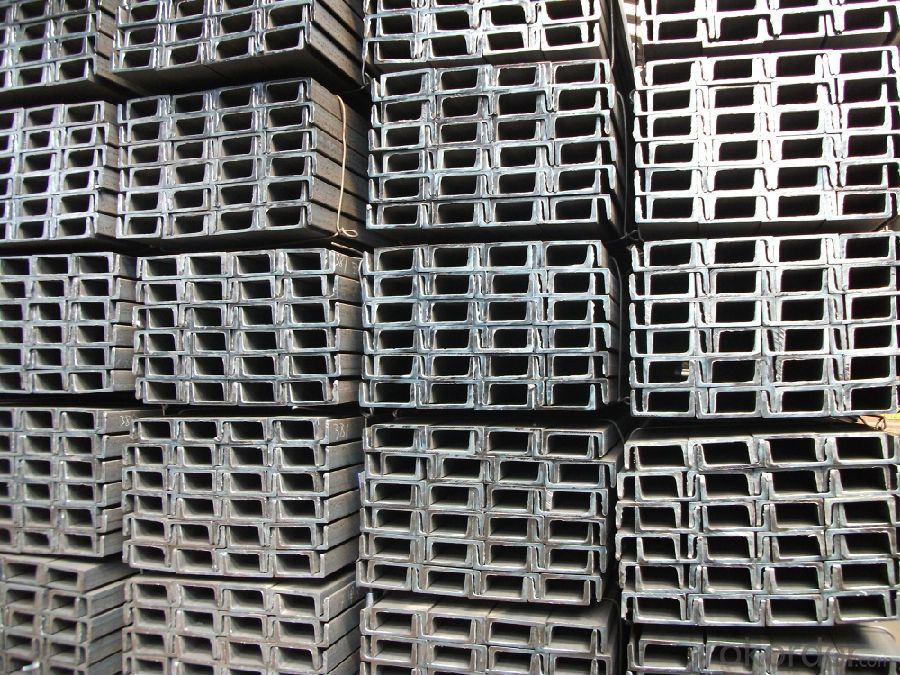
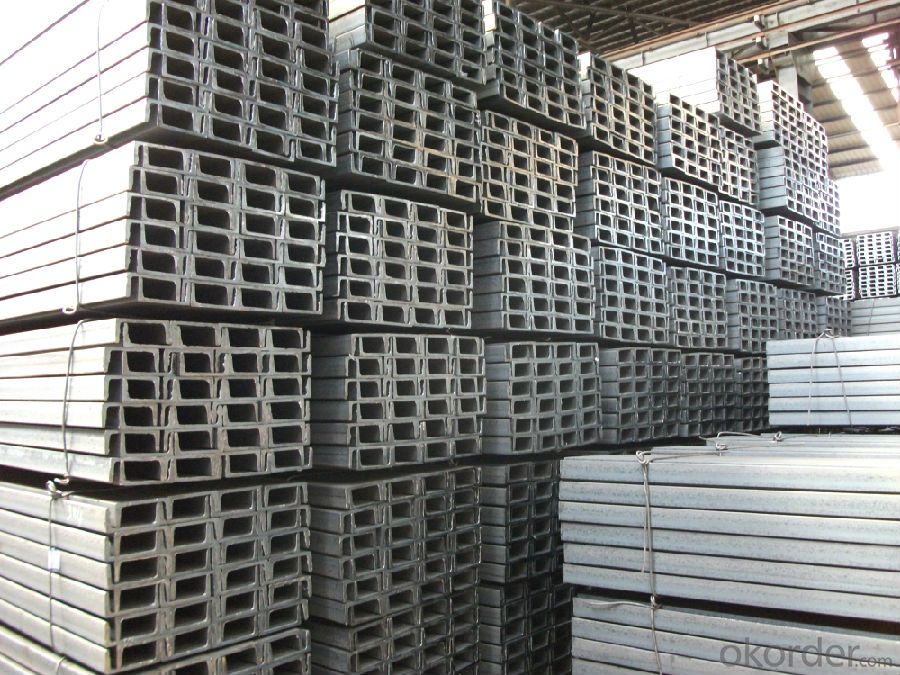
- Q: What is the load-bearing capacity of steel channels?
- The load-bearing capacity of steel channels depends on various factors such as the size and shape of the channel, the grade and quality of the steel used, and the specific application and conditions in which it is being used. Steel channels are commonly used in construction and engineering projects to provide support and structural stability. They are designed to withstand the weight and pressure exerted on them without deforming or collapsing. To determine the load-bearing capacity of a steel channel, engineers typically consider the maximum allowable stress or load that the channel can safely carry without exceeding its yield strength or causing permanent deformation. This is usually determined through rigorous testing and analysis, taking into account the specific properties and dimensions of the channel. It is important to note that load-bearing capacity can vary significantly depending on the specific design and manufacturing processes used for the steel channel. Therefore, it is crucial to consult engineering specifications, codes, and standards, or seek the guidance of a professional engineer to accurately determine the load-bearing capacity of a specific steel channel for a given application.
- Q: Can steel channels be used for ceiling installations?
- Indeed, ceiling installations can make use of steel channels. In construction, steel channels are widely employed due to their robustness and longevity. They serve as a reliable and steady foundation for hanging or attaching different elements of a ceiling system, such as electrical fixtures, HVAC ducts, and acoustic panels. Moreover, steel channels facilitate effortless installation and adjustment, rendering them highly favored for both residential and commercial ceiling projects. Furthermore, they possess exceptional load-bearing capabilities, guaranteeing the steadfastness and safety of the ceiling structure.
- Q: What type of channel is used for the type of room with a span of 4 meters?
- The flexural strength of 10# steel in the distance is less than 50 cm, a span of 4 meters is safe.
- Q: Such questions. Ask an expert to help advise!!
- Dear LZ, I am not an expert to collect suggestions and hope to help you more than the advantages of cast steel has good sound insulation, good toughness of welding or shaking, if below the ceiling, 10000% crack, treatment is not good, the cost is not low, not only to shop above board, but also among insulation materials below the ceiling (or channel was ugly) the cost is also high, is too noisy. For a long time board rotten, ceiling cracking that was rebuilt, tired.In my opinion, it is still well watered, and the cost is still at the end. The effect is good, and it can be said that once and for all
- Q: Are steel channels suitable for agricultural equipment?
- Yes, steel channels are suitable for agricultural equipment. They provide durability, strength, and resistance to various environmental conditions, making them ideal for withstanding the demanding nature of agricultural operations.
- Q: Can steel channels be used in the chemical industry?
- Indeed, the chemical industry finds steel channels to be highly applicable. With their remarkable strength, durability, and corrosion resistance, steel channels are frequently utilized across multiple industries, including the chemical sector. They serve as essential elements for structural support, while also being instrumental in constructing platforms, walkways, and equipment supports within chemical plants. Furthermore, steel channels exhibit exceptional resilience to both high temperatures and pressures, rendering them ideal for chemical processing and transportation. In summary, steel channels prove themselves to be an adaptable and dependable option for the chemical industry.
- Q: Are steel channels suitable for use in the construction of storage racks?
- Steel channels are indeed appropriate for the construction of storage racks. In the construction industry, steel channels are widely utilized due to their robustness and longevity. They offer outstanding support and stability to storage racks, enabling them to bear heavy loads without any deformation or distortion. Moreover, steel channels can be effortlessly tailored to meet specific storage requirements, rendering them an adaptable choice for building storage racks. The corrosion resistance of steel further guarantees the durability of the racks, even in severe conditions. In summary, steel channels are a dependable and fitting alternative for employing in the construction of storage racks.
- Q: Are steel channels suitable for industrial applications?
- Steel channels are an excellent choice for industrial applications due to their high suitability. Made from top-quality steel, they are renowned for their strength, durability, and versatility. Capable of withstanding heavy loads, they provide structural support in a range of industrial settings. Commonly used in the construction of buildings, bridges, warehouses, and factories, steel channels are also extensively employed in the manufacturing and transportation industries for the production of machinery, equipment, and vehicles. Additionally, steel channels can be easily customized to meet specific requirements, available in various sizes, shapes, and thicknesses. Thanks to their outstanding properties and adaptability, steel channels are widely recognized as a dependable and cost-effective solution for industrial applications.
- Q: What are the limitations of using steel channels?
- One limitation of using steel channels is their weight, which can make them difficult to handle and install. Additionally, steel channels may be prone to corrosion, especially in environments with high humidity or exposure to chemicals. Another limitation is their cost, as steel channels can be more expensive compared to other building materials. Lastly, steel channels may have limited design flexibility, as they are typically available in standard shapes and sizes.
- Q: How do steel channels differ from steel beams?
- When it comes to construction and engineering projects, steel channels and steel beams are both commonly utilized as structural steel members. However, they possess distinct variations in terms of their shape and structural properties. Steel channels are typically C-shaped sections that consist of two flanges and a web that connects them. The flanges run parallel to each other and are perpendicular to the web. This particular design offers strength and rigidity while maintaining a lightweight profile. Steel channels are frequently employed as framing or support elements, particularly in situations necessitating additional stiffness or resistance to bending. Conversely, steel beams, also referred to as I-beams or H-beams, exhibit a unique H-shaped cross-section. They comprise a horizontal top and bottom flange linked by a vertical web positioned in the center. This design generates a robust and stable structure capable of effectively carrying heavy loads across extended spans. Steel beams are commonly employed in building construction, bridges, and other load-bearing structures. The primary distinction between steel channels and steel beams lies in their shape and structural behavior. Steel channels are more suitable for applications requiring additional stiffness or resistance to bending, whereas steel beams excel in the transportation of heavy loads over longer distances. The selection between the two depends on the specific project requirements, including the intended load, span, and structural design.
Send your message to us
U-channel JIS Standard with Different Sizes
- Loading Port:
- Tianjin
- Payment Terms:
- TT or LC
- Min Order Qty:
- 25 m.t.
- Supply Capability:
- 1000 m.t./month
OKorder Service Pledge
OKorder Financial Service
Similar products
Hot products
Hot Searches
Related keywords
